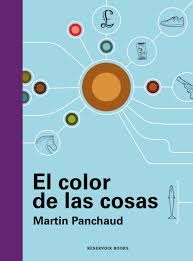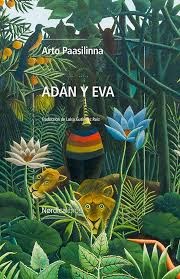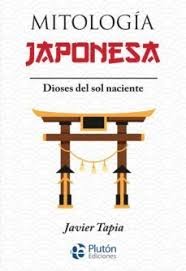
Original Language: French
Títutulus original: The color of things
Translation: Mas Xisca
Year of publication: 2019
Valoración: Essential
That boy plump that we see high on the roof is Simon Hopea fourteen -year -old boy to whom his mother brings himself based on cakes and whose physicist creditor the teasing, and perhaps something else, of the kids of the neighborhood. In his family things are not going very well because the father spends money on equestrian bets, and the Broncas are continuous and very unpleasant. He didn’t have to say it but, just in case, Simon It is that ocher circle with a brown edge around which other characters are shown that will appear, along with the circumstances that will affect this stage of their life: money, horses, a ticket, a weapon. All exposed so that the scheme of an electrical circuit looks like, or something.

The story is simple but also raw, the boy in an unrestracy atmosphere, protagonist against his will of tragic events, object of the unsuspected fluctuations of luck, and victim of errors and cowardice of past times. A hard story, with hardly any counterweight of anything minimally friendly, that distils bitterness everywhere.
Worse, because the author presents it to us in this unusual way, as in an old arcade game, which appears a lightness that does not exist anywhere. That kind of zenith image that reduces the characters to colored points can also be a form of dehumanization, by virtue of which they would be deprived of soul, reduced to things that evolve on a screen, increasing the contrast with a story that is in the background full of emotionality and is deeply human.

But let’s not be mistaken, let’s not see faces (which could be full of fear, anger, despair, sadness, resentment) does not convert the story into something cold, and that is one of the great successes of the graphic aspect of the book: once in a couple of pages we have adapted the eye and brain to the images, we can appreciate small movements, the way of placing itself, the distances, the distances, the path That this is starring in human beings, a family, a group of kids, the ticket seller, La Pythoness.
Being able to express all this with only some colored circles, already except that someone tells me that it was done before, is absolutely revolutionary, a form of expression so radical that it could only have gone wrong. And yet, Panchaud not only models it with care, with authentic art, but narratively manages to sustain a good story, and it is even allowed to throw promptly other resources (realistic drawing, the scheme, the ideogram) without losing balance, always maintaining control over what he wants to tell and how he wants to tell it.
Yes, gentlemen, we still have the Essential To great popes of literature, but this book deserves it with all the letters, what happens.
Source: https://unlibroaldia.blogspot.com/2025/05/martin-panchaud-el-color-de-las-cosas.html


